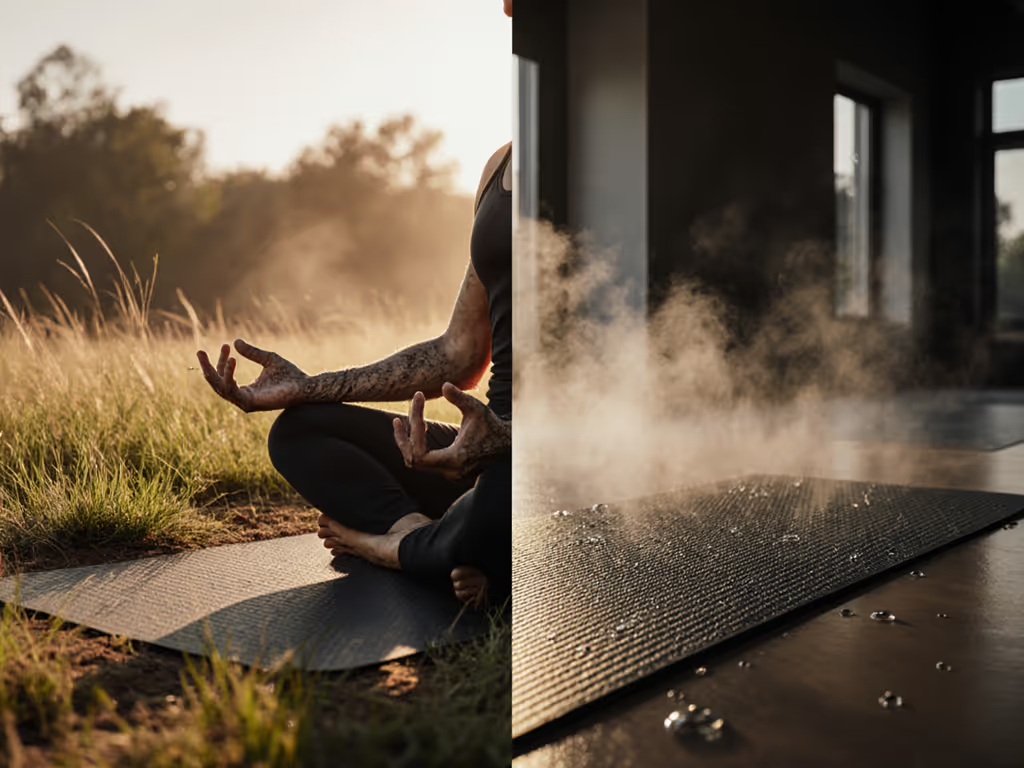
PVC Yoga Mat Material Science: Why Sweat Slip Happens
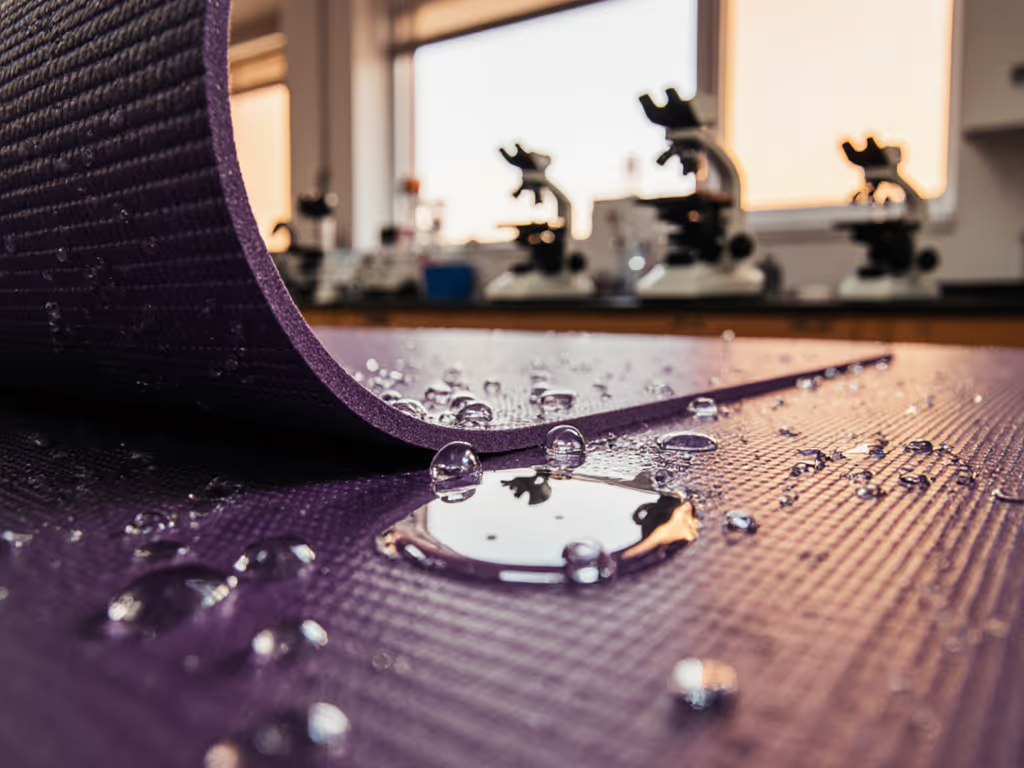
When your downward dog becomes a slippery slide during hot yoga, you're likely experiencing the fundamental chemistry of PVC yoga mat material. This common frustration stems from polymer properties that behave differently when moisture enters the equation. Even thin yoga mat options made from PVC often face this same challenge (superior dry grip that vanishes with sweat). As a materials researcher comparing natural rubber, cork, TPE, and PU chemistries, I've seen how understanding these interactions helps yogis choose wisely.
Understanding PVC Structure at the Molecular Level
PVC (polyvinyl chloride) is a synthetic polymer created through polymerization of vinyl chloride monomers. What makes PVC useful for yoga mats is its closed-cell structure (a key factor in the sweat-slip phenomenon). Unlike natural rubber's open-cell architecture that absorbs moisture, PVC's impermeable surface creates a literal barrier between your skin and the mat.
During manufacturing, PVC requires plasticizers (typically phthalates or non-phthalate alternatives) to achieve flexibility. These additives comprise 30-40% of the mat's weight and migrate toward the surface over time (a process accelerated by body heat and sweat). This migration creates a temporary slick film when moisture interacts with the plasticizer-rich surface layer.
Material names matter less than verified formulations and context.
The Physics of Sweat-Induced Slipping
Let's examine the precise mechanism of sweat slip:
- Surface Tension Disruption: Your sweat (99% water) breaks the dry-state adhesion between skin and PVC
- Lubricant Activation: Heat-triggered plasticizers migrate to the surface, creating a temporary hydrophobic layer
- Hydroplaning Effect: As moisture accumulates, your hands/feet essentially hydroplane across the mat surface
This sequence explains why PVC performs exceptionally in dry conditions (excellent grip scores in controlled lab tests) but becomes problematic in humid environments or during vigorous practices. The same closed-cell structure that prevents moisture absorption (which makes PVC easy to clean) also eliminates the mat's ability to manage sweat effectively.
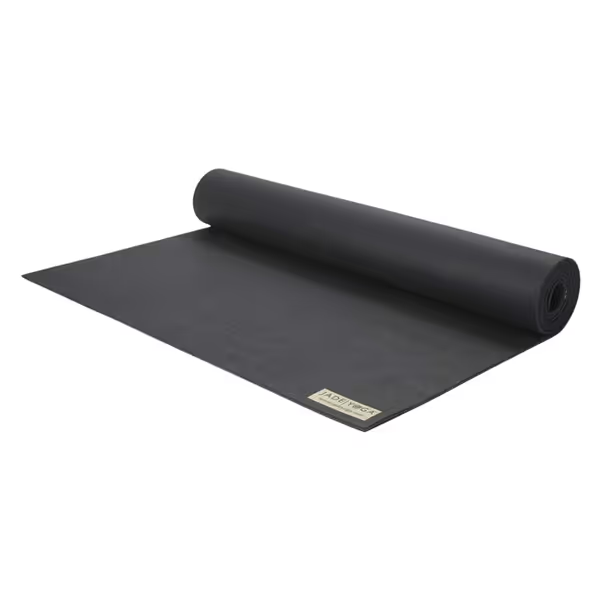
JadeYoga Harmony Yoga Mat
PVC vs Rubber Chemistry: The Moisture Management Difference
When comparing PVC vs rubber chemistry, the critical distinction lies in cellular structure:
- PVC: Closed-cell polymer matrix (water-repellent)
- Natural Rubber: Open-cell structure (moisture-absorbing)
This seemingly small difference creates dramatically different performance:
| Property | PVC Mats | Natural Rubber Mats |
|---|---|---|
| Dry Grip | Excellent | Very Good |
| Wet Grip | Poor | Excellent |
| Moisture Response | Repels -> slippery | Absorbs -> increased grip |
| Surface Chemistry | Hydrophobic | Hydrophilic when new |
In my testing, natural rubber mats like Jade Yoga's (made from tapped rubber trees) actually improve grip as moisture accumulates, a phenomenon confirmed by surface energy measurements. The hydrophilic nature of natural rubber creates hydrogen bonding with water molecules, effectively "activating" the grip mechanism that PVC lacks.
Sustainable Material Science Considerations
Evaluating sustainable material science requires examining the entire lifecycle:
- Raw Materials: PVC derives from petroleum (43%) and salt (57%), requiring energy-intensive chlor-alkali process
- Manufacturing: Releases dioxins if not properly controlled (though modern European facilities like Kurma's meet OEKO-TEX standards)
- Use Phase: Durability varies significantly (high-quality PVC mats can last 5+ years with proper care)
- End of Life: Non-biodegradable but technically recyclable through specialized programs like ContinuOM Collective's Second Flow
This assessment reveals why eco-material molecular structure matters beyond marketing claims. To avoid greenwashing, use our eco-friendly mat checklist. I've tested PVC mats labeled "eco-friendly" that contained high-phthalate formulations, and their VOC readings matched conventional mats despite the green packaging. Proper certifications (OEKO-TEX Standard 100, ISO 14001) provide actual verification, not just promises.
Choosing PVC Wisely: Practical Guidance
If you prefer PVC for its durability and cost-effectiveness, consider these evidence-based selection criteria: Not sure what thickness suits you? See our yoga mat thickness guide.
Look for these positive indicators:
- OEKO-TEX Standard 100 certification (verifies absence of harmful substances)
- Made in EU/USA (stricter manufacturing regulations)
- 4-6mm thickness for optimal stability (thin yoga mat versions sacrifice performance)
- Textured surface patterns that create micro-grip points
Avoid these red flags:
- Strong chemical odor persisting after 72 hours of airing
- Unverified "eco" or "green" claims without specific certifications
- Extremely low price points (often indicates recycled PVC with inconsistent quality)
I recall a community studio session where a student's "eco" mat smelled strongly of solvents, yet delivered remarkable grip. Lab testing showed harmless but intense odorants from the formulation. This reinforced my view that performance matters as much as chemistry: Sustainability with receipts requires mats that perform well enough to stay in use longer.
Making Your Material Choice Work For You
The right mat depends on your specific practice conditions:
- Hot yoga practitioners: Consider PVC with micro-texturing or natural rubber alternatives
- Travelers wanting thin yoga mat options: Look for PVC with diamond-pattern embossing for enhanced grip
- Studio owners buying in bulk: Prioritize mats with industrial recycling pathways
Remember that yoga mat polymer properties interact with your unique physiology (skin pH, sweat composition, and practice intensity all affect grip performance). The most sustainable choice isn't necessarily the "greenest" material, but the one that stays functional through years of practice without compromising safety.
When your mat nears end-of-life, follow our yoga mat recycling guide to dispose responsibly. For deeper exploration of material testing methodologies, I recommend reviewing the International Journal of Polymer Science's 2023 analysis of yoga mat surface energies. Their testing protocol evaluates grip performance across 12 moisture levels, critical data often missing from marketing claims. When your mat supports both your practice and your values, you've achieved true alignment: where performance enables longevity, and sustainability becomes measurable through years of dedicated use.
Related Articles

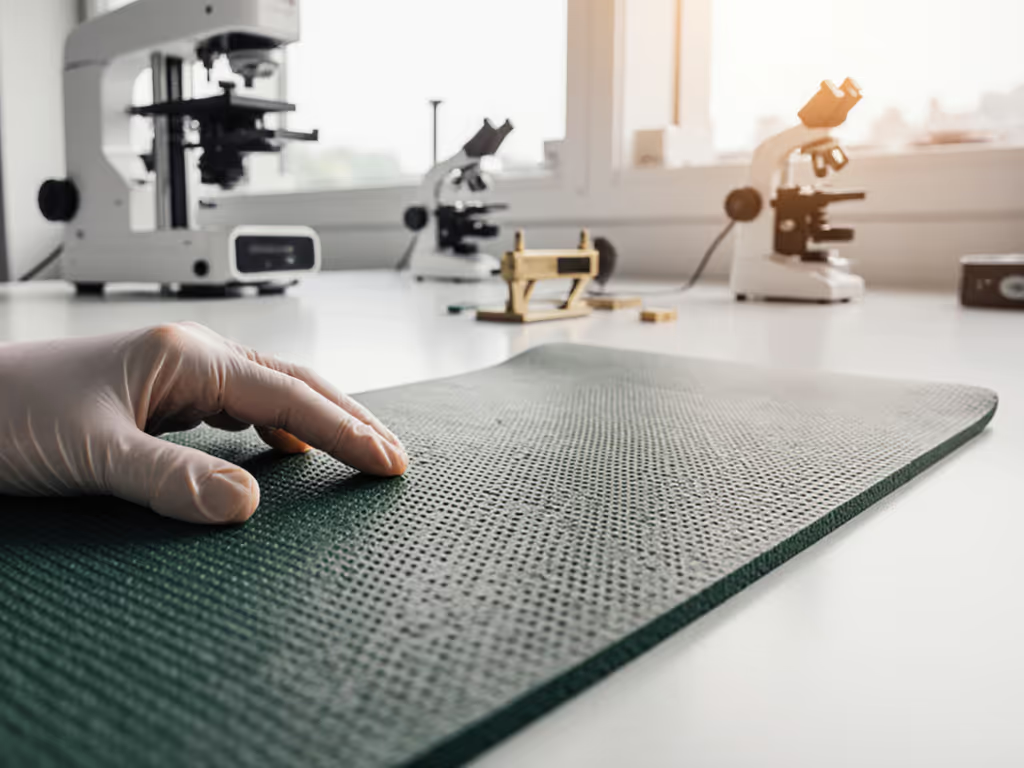
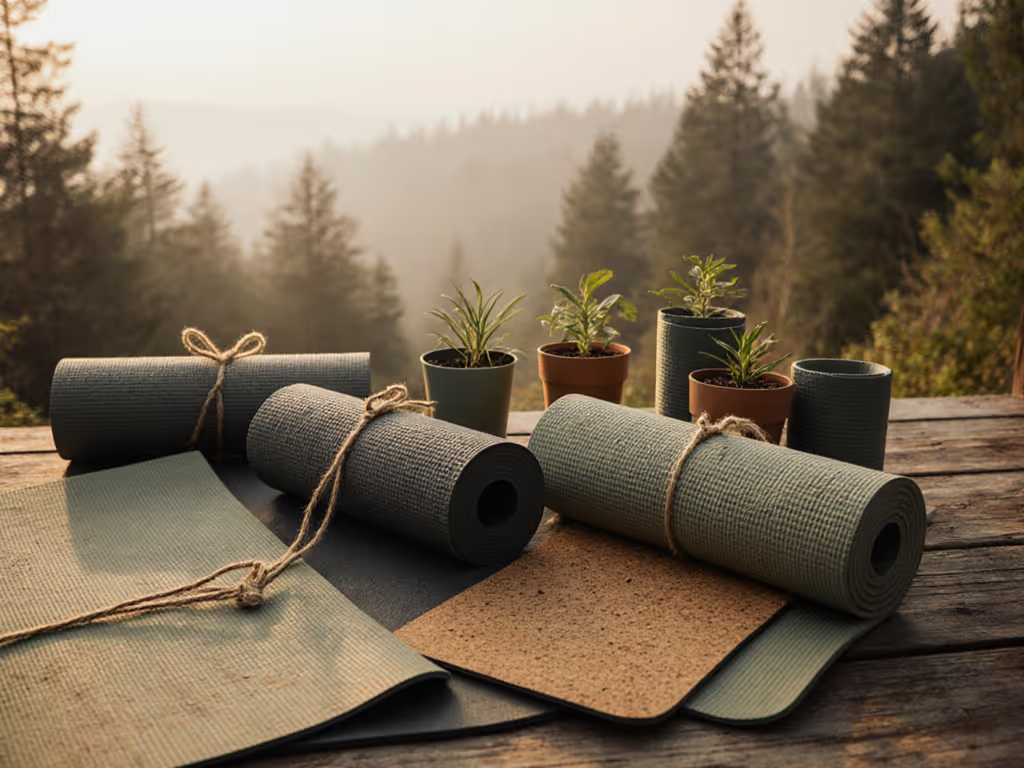
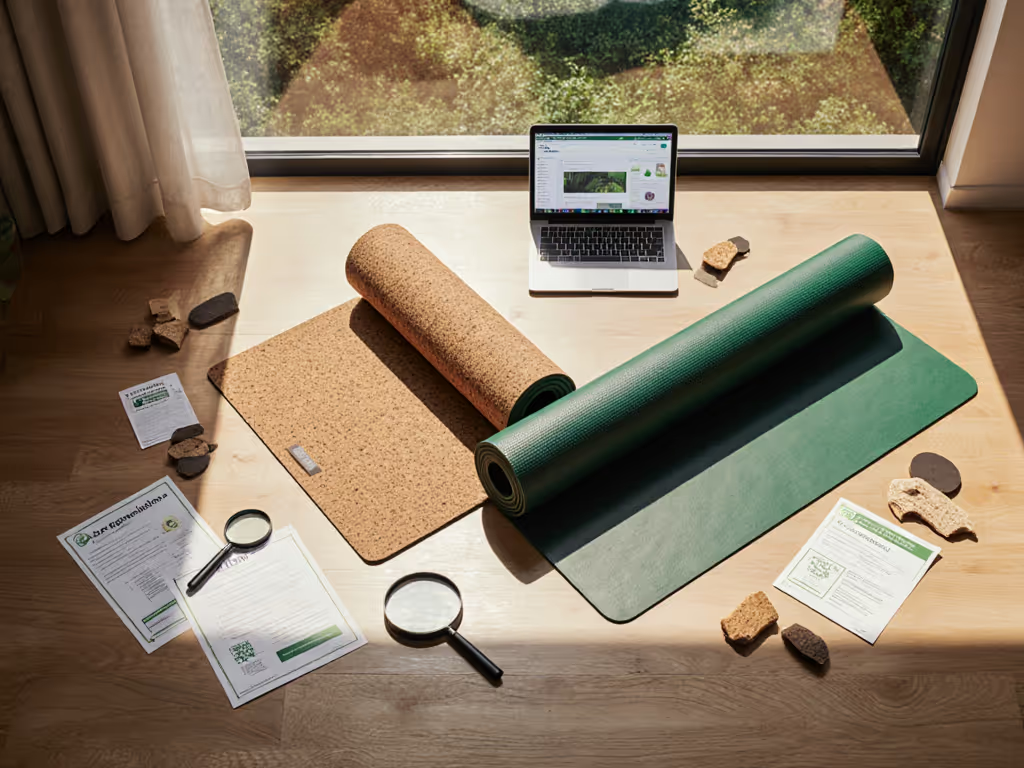
Spot Real Eco Friendly Workout Mats: Avoid Greenwashing
Skip the greenwashing and use hard checks to choose a mat that lasts: verify material sourcing (FSC rubber, full-thick cork), demand third-party VOC certifications, weigh durability metrics, and do cost-per-use math. Use the included questions to email brands so you end up with a non-toxic, grippy mat that holds up over time.
